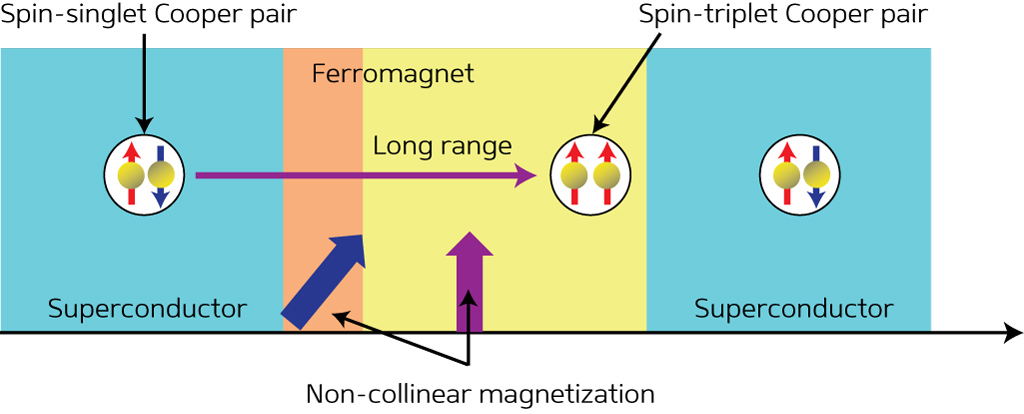PROCESSORS
Taking spin further
One of the major hurdles in the development of faster electronic devices is the amount of heat produced by silicon microchips. This heat is created by the transport of electrical charges through transistors. Seiji Yunoki and colleague Shin-ichi Hikino from the RIKEN Center for Emergent Matter Science in Wako have now proposed a device that instead of moving electrons is able to transport information using electron spin over long distances1.

Moving electrons through a material creates intense heat as the electrons bounce off the atoms in the device. Moving information by passing it from one electron to another without any electron movement would therefore eliminate this source of heat. The magnetic property of electrons—their spin—has been studied as a possible means of achieving such a scheme. However, conventional magnetic materials fail to provide the long-distance transport of information required for such a strategy. “It is well known that conventional spin current can propagate only short distances,” says Yunoki. “This is one of the most critical problems in the research of spintronics.”
The spintronics scheme proposed by Yunoki and Hikino is based on sandwiching two adjacent thin magnetic films between superconducting layers. In conventional superconductors, the electrons are bound together in pairs formed by antiparallel electron spins, called a spin-singlet Cooper pair. However, with a ferromagnetic layer nearby, the spin of the two electrons in such a Cooper pair will align itself in the same direction as the magnetic field. These spin-triplet Cooper pairs (STCs) can move from the superconductor into the ferromagnetic layer, where they are very stable and long-lived (Fig. 1).
The researchers have mathematically shown that within the ferromagnetic layer, the STC is able to carry spin currents over extended distances of several tens to hundreds of nanometers, and possibly even more if the magnetic material can be made with high purity. The spin transport happens without any charge current, and there is no voltage drop across the devices, meaning that no heat would be generated.
So far, devices showing spin currents have been very difficult to realize, and such currents in the STC have never been observed. However, the simplicity of the proposed scheme promises its realization and could open a new era, says Yunoki. “We expect that the proposed superconductor–ferromagnet multilayer device can provide a new platform to study the spin transport of Cooper pairs in this developing research field.”
